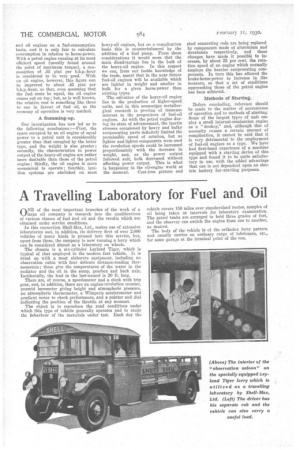A Travelling Laboratory for Fuel and Oil
Page 138

If you've noticed an error in this article please click here to report it so we can fix it.
ONE of the most important branches of the work of a large oil company is research into the qualifications of various classes of fuel and oil and the results which are obtained under service conditions.
In this connection Shell-Mex, Ltd., makes use of extensive laboratories and, in addition, its delivery fleet of over 2,000 vehicles of many kinds is pressed into this service, but, apart from these, the company is now running a lorry which can be considered almost as a laboratory on wheels.
The chassis is a six-cylinder Leyland Tiger, which is typical of that employed in the modern fast vehicle. It is fitted up with a most elaborate equipment, including an observation cabin with four delicate distance-reading thermometers; these give the temperatures of the water in the radiator and the oil in the sump, gearbox and back axle. Incidentally, the lead to the last-named is 20 ft. long.
There are, of course, a speedometer and a clock with trip gear, and, in addition, there are an engine-revolution counter, aneroid barometer giving height and atmospheric pressure, an atmospheric thermometer, a Wimperis accelerometer and gradient meter to cheek performance, and a pointer and dial indicating the position of the throttle at any moment.
The object is to reproduce the road conditions under which this type of vehicle generally operates and to study the behaviour of the materials under test. Each day the vehicle covers 150 miles over standardized routes, samples of oil being taken at intervals for laboratory examination. The petrol tanks are arranged to hold three grades of fuel, and the observer can switch the engine from one to another, as desired.
The body of the vehicle is of the orthodox lorry pattern and, usually carries an ordinary cargo of lubricants, etc., for some garage at the terminal point of the run.




























































































































































































































